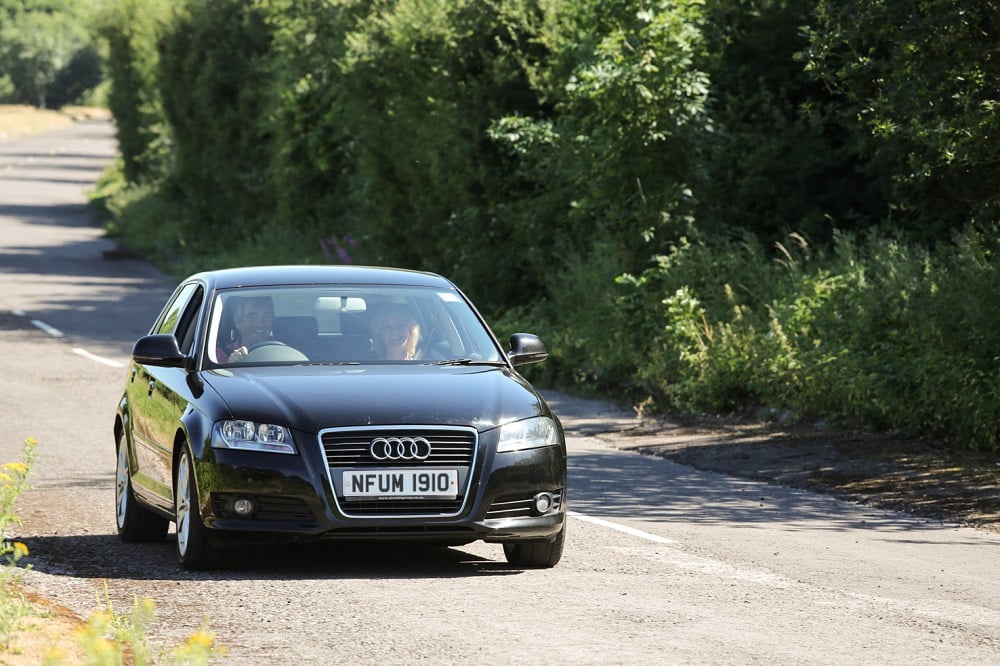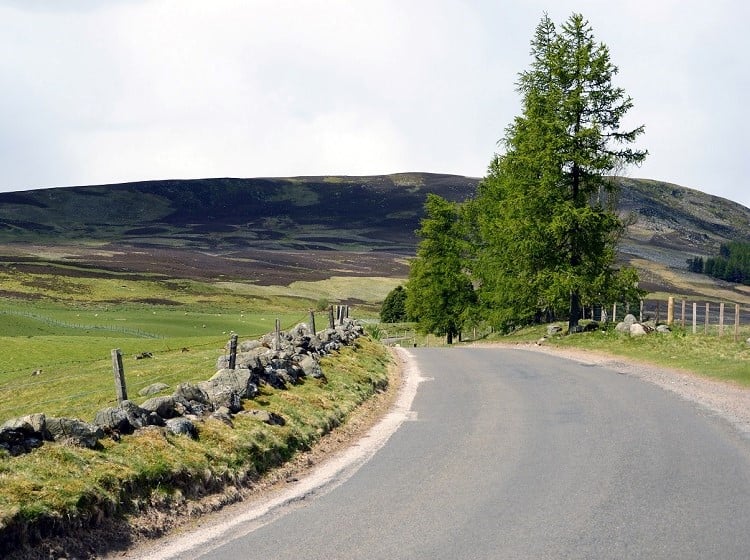Rural Road Safety Advice for Mature Drivers

With the varying nature of rural roads, it’s not uncommon to go from a high-speed dual carriageway to a single carriageway, and back again, in the space of a few minutes, navigating numerous hazards along the way.
Whether they live or work in the countryside or are simply visiting, drivers will share the road with pedestrians, cyclists, motorcyclists and horse riders, as well as farm traffic and other motorists.
Nigel Lloyd-Jones of the Gloucestershire Older Drivers Forum says that while the golden rule for all rural road users is to be prepared for the unexpected, mature drivers should have heightened awareness in acknowledging the decline in cognitive and mobility skills that come as a natural part of ageing:
“Be mindful that by the age of 65 our reaction times can be 22 times slower than a 30-year-old.”
Here, Nigel provides some advice on how mature drivers can address five of the main concerns of rural road users over the age of 65.
Blind corners and junctions
As we age, our reaction time diminishes, which can make it more difficult to judge the speed of other vehicles or the sharpness of corners. To keep yourself safe:
- When approaching a bend assess how sharp it is by looking at the tree lines or hedge rows. The speed of traffic coming in the other direction also gives an indication of the severity of the bend.
- Slow down before entering a corner or junction, even if this means entering more slowly than you think is necessary.
- Give yourself more time than you think you need at junctions. If you are not confident when turning right at a junction, consider turning left and taking another, safer route.
- Always think “What can I see? What might happen? And can I stop on my side of the road if it does happen?"
Driver impatience and breaking the speed limit
Many mature drivers adapt their driving and lower their speed in recognition of the fact that their mobility and cognitive skills are lower than they were – particularly when driving at night or in difficult conditions.
- Speed limits are not targets. Drive at the speed at which you feel comfortable, within the speed limit.
- If you are being tailgated and are following another car, allow more space to the car ahead, to allow the impatient driver to overtake.
- If they overtake, do not change speed or road position as this could cause confusion.
- If necessary, and if it is safe to do so, pull over and let them pass.
- Consider fitting front and rear dashcams so anti-social driving can be reported to the police.
- There may come a time when you are driving so slowly it becomes a danger for others. Then you may need to consider whether it is time to retire from driving.
Poor road quality
Roads with potholes, poor surface, mud or other obstacles, or those without markings, create another set of conditions to react to. Given slower reaction times, it is even more important that mature drivers have heightened awareness on these roads.
- Before travelling, check your Highways website to see what poor road conditions have been reported. Be extra vigilant when there are poor road conditions or, if necessary, research alternative routes.
- If you must drive on roads with potholes:
- Leave plenty of space to the car ahead so you have time to identify the pothole and take evasive action if necessary.
- If you can’t steer safely around it, slow down, then release the brakes before you hit the pothole. This allows the suspension to recover and have the full range of travel to absorb the impact.
- Also hold the steering wheel firmly so the impact of the pothole does not take you off course. - Be aware that road conditions are the same for everyone – leave plenty of time and space to react to other road users – particularly vulnerable road users – who may need to take sudden evasive action to avoid road hazards.
Narrow or winding roads
Our vision deteriorates as we age, and by the age of 70 we can lose 20 to 30 degrees of peripheral vision – which is particularly important on narrow or winding roads.
- Remember that 90% of the information we use to drive is visual – where we can’t see as much of the road, collisions may be more likely, so adapt your driving accordingly.
- Peripheral vision plays an important part when passing oncoming vehicles on narrow roads. If possible, give yourself more room and drive more slowly than you think you need when undertaking these manoeuvres to make up for sensory decline.
- The College of Optometrists recommends having an eye test at least every two years, so check when you last had yours. However, once we are over 70 eyesight can quickly deteriorate, so it is a good idea to have a test every year.
Navigating pedestrians, cyclists, and horse riders
The Highway Code’s ‘Hierarchy of Road Users’ specifies that those in vehicles which can do the most damage have the greatest responsibility to keep roads safe. Drivers have an obligation to protect vulnerable road users like pedestrians, cyclists and horse riders, but these also represent another hazard for mature drivers to navigate.
- Most mature drivers passed their test a long time ago and may not have looked at the Highway Code for years – despite it being regularly updated.
- At 70, when renewing our licence, we are required to confirm we have read the Highway Code and understand the latest regulations. This includes the passing distances and speed of other vulnerable road users that came into force in January 2022. Please remember that not knowing the rules of the Highway Code is no excuse in the eyes of the police. You can buy a copy of the Highway Code or download it free of charge and sign up for updates here.
- Our slower reaction times might mean we need to wait for longer behind a vulnerable road user before it is safe to pass. Only overtake on a straight road when you can see no cars coming towards you, and keep a respectful distance from cyclists, horse riders or pedestrians before passing.
- As we age, the feeling in our feet and legs can decline reducing our sensitivity when using foot controls. Be careful not to over-rev or over-accelerate around horses as this may spook them.
The Older Drivers Forum is the leading national organisation promoting mature driver road safety. For further information on the Older Drivers Forum and on how mature drivers can refresh their driving skills click here.

More rural road safety advice
Our aim is to make rural roads a safer place to be for anyone who lives in, works in, or visits the countryside - from motorists, motorcyclists and agricultural vehicle drivers to horse riders, pedestrians and cyclists. Find out more about our Rural Road Safety campaign and read NFU Mutual's advice to all rural road users.